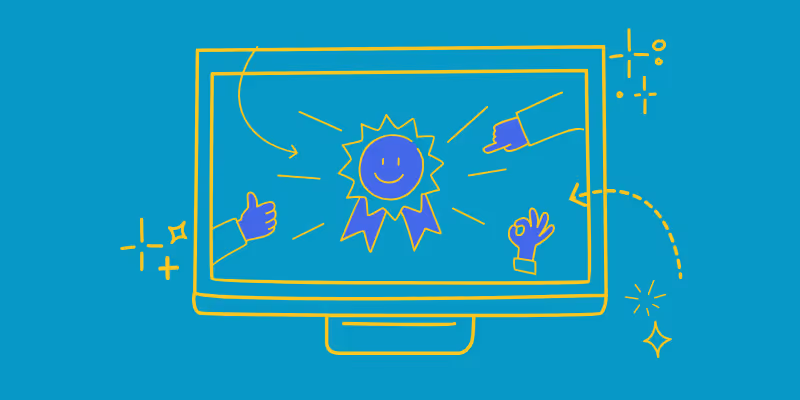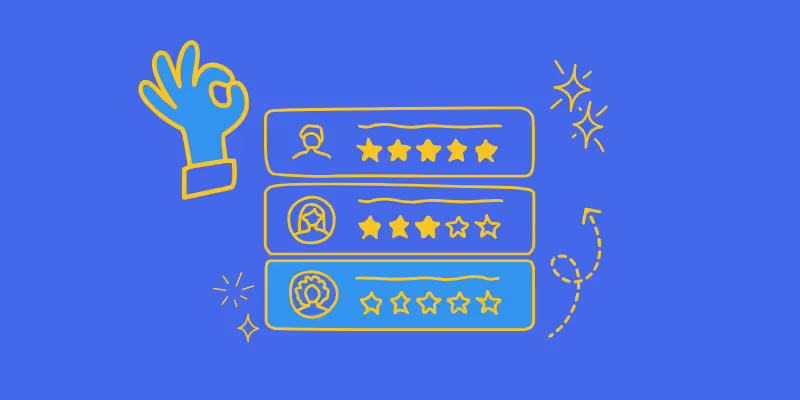

Onboarding New Hires: 9 Strategies to Improve Retention
Have you ever wondered why many talented employees leave their jobs within the first few months? The answer often lies in a lack of proper onboarding.
When new hires aren't effectively introduced to the company culture, role, and team, they can feel lost, confused, and undervalued. This can lead to disengagement, frustration, and, ultimately, a decision to leave.
Learn how a well-designed onboarding process can significantly impact employee retention and productivity.
» Learn how technology in onboarding can improve staff retention
Why is Good Onboarding Important?
Effective onboarding is far more than just paperwork and introductions. It's a critical process that sets the tone for an employee's entire journey with your company. Here's why it matters:
- Improved Retention: Statistics show that businesses with solid onboarding processes can improve new hire retention by 82%. [1] In a time when employee turnover is costly and disruptive, this alone makes a compelling case for investing in onboarding.
- Increased Productivity:. When employees understand their roles and responsibilities and how they fit into the larger organizational structure, they can contribute more effectively and efficiently.
- Enhanced Engagement: 69% of employees are likely to stay with a company for three years if they experience great onboarding. [2] Engaged employees are more committed and productive and have the potential to become advocates for your organization.
- Faster Time-to-Productivity: Good onboarding accelerates the time it takes for new staff to reach total productivity. This means your investment in new talent starts paying off sooner.
- Stronger Company Culture: This is an opportunity to immerse new employees in your company's culture, values, and mission. This helps maintain and strengthen your organizational culture as you grow.
- Reduced Anxiety: Starting a new job can be stressful. A comprehensive onboarding process helps alleviate this anxiety, making new staff feel welcome and prepared.
» Learn how to create an effective employee training playlist on your LMS
Common Onboarding Mistakes to Avoid
While good onboarding offers many benefits, poor onboarding can lead to disengagement, underperformance, and early departures. Here are some common mistakes to watch out for:
- Information Overload: Bombarding new staff with too much information in a short period can be overwhelming and counterproductive. It's important to pace the onboarding process and prioritize essential details.
- Lack of Structure: An unstructured or disorganized onboarding process can leave new employees feeling lost and unsupported. Having a straightforward, well-planned onboarding program is crucial.
- Neglecting Social Integration: Focusing solely on job tasks and overlooking the importance of social integration can leave new employees feeling isolated. Building relationships is a vital part of successful onboarding.
- One-Size-Fits-All Approach: Every role and every employee is different. Failing to personalize the onboarding experience can result in missed opportunities to engage and support new hires effectively.
- Ending Onboarding Too Soon: Onboarding is a more than one-day or one-week event. Ending the process too quickly can leave employees feeling unsupported as they navigate their new roles.
- Lack of Follow-Up: Failing to check in regularly with new staff during their first few months can lead to unaddressed issues and concerns.
- Unclear Expectations: Not communicating job expectations, performance metrics, and goals can lead to confusion and underperformance.
- Neglecting Remote Workers: In today's increasingly remote work environment, failing to adapt onboarding processes for remote employees can lead to disconnection and disengagement.
Understanding the importance of good onboarding and being aware of these common pitfalls can create a more effective onboarding process.
» Discover the ultimate guide to building an engaging training playlist
Our Top 9 Strategies to Improve Retention
1. Pre-Boarding Engagement
Pre-boarding starts when a new employee accepts their job offer and continues until their first official workday. This involves early interactions such as sending welcome emails, sharing critical company information, completing administrative tasks, and introducing them to future colleagues.
Benefits include:
- Reducing first-day anxiety
- Accelerating the integration process
- Improving new hire retention
- Enhancing overall employee experience
To implement pre-boarding effectively:
- Set clear goals and expectations
- Complete administrative tasks ahead of time
- Facilitate early team introductions
This is particularly effective in large organizations and those with many new staff, as it helps manage the onboarding workload more efficiently. It's also beneficial in industries with high turnover rates, such as tech and retail, where making a solid first impression can significantly impact retention.
To measure pre-boarding effectiveness, track metrics such as employee retention rates, time to productivity, and employee satisfaction scores.
» Explore how to use training video creation for employee development
2. Personalized Onboarding Experience
Personalized onboarding tailors the introduction and integration process to new hires' individual needs and backgrounds. This involves assigning mentors, customizing training, and providing targeted resources that align with each new employee's specific roles and personal learning styles.
Benefits include:
- Faster integration into the team and company culture
- Improved job satisfaction and engagement
- Higher retention rates
- Better overall performance
Key steps in implementing personalized onboarding:
- Assess individual needs
- Develop customized plans
- Monitor and adjust as needed
This is particularly beneficial for organizations with diverse workforces and varied job roles, such as technology companies, healthcare organizations, and large corporations with multiple departments.
» Explore how video improves the Ed Tech industry
3. Clear Communication and Role Clarity
This involves explicitly defining job responsibilities, expectations, and performance metrics for new hires. It ensures employees understand their organizational roles and how their work contributes to broader company goals.
Benefits include:
- Reduced misunderstandings and conflicts
- Increased employee confidence and productivity
- Improved job satisfaction and engagement
- Better alignment between individual and organizational goals
Critical steps in implementation:
- Define and document roles clearly
- Communicate expectations and goals
- Establish regular feedback and adjustment mechanisms
This is vital across all company sizes and industries but is particularly beneficial in fast-paced or rapidly growing sectors where roles can evolve quickly, and clarity is essential to maintain operational effectiveness.
» Empower your team to succeed using innovative training strategies
4. Integration Into Company Culture
Integrating new staff into company culture involves immersing them in the company's values, norms, and practices from the onset of their employment. This ensures that employees understand the behavioral expectations and are aligned with the company's mission and goals.
Benefits include:
- Improved employee engagement and job satisfaction
- Stronger team cohesion and collaboration
- Better alignment with company values and goals
- Increased employee retention
Bulleted List
Critical steps in implementation:
- Communicate cultural values clearly
- Organize cultural immersion activities
- Implement mentorship programs
This strategy benefits organizations of all sizes and industries, especially those undergoing rapid growth or significant workforce changes. It's essential in companies where a strong corporate culture is a key component of success.
» Simplify your company's workflows via AI process documentation
5. Professional Growth Opportunities
Offering professional growth opportunities involves providing employees with pathways for career advancement through training, mentoring, and continuous learning. This strategy aims to develop their skills and knowledge, making them more valuable to the organization and enhancing their career satisfaction.
Benefits include:
- Increased employee engagement and job satisfaction
- Improved retention rates
- Enhanced company reputation as an employer
- Development of a skilled and adaptable workforce
Key steps in implementation:
- Assess employee needs and skills gaps
- Develop structured professional development programs
- Establish mentorship programs
This is particularly beneficial in knowledge-driven industries such as technology, healthcare, and finance, where continuous learning and skill advancement are critical. However, it's also effective in any organization that faces rapid changes in its industry standards or technological advancements.
» Find out how to transform onboarding with microlearning videos
6. Recognition and Rewards
Recognition and rewards programs involve acknowledging and appreciating employees' contributions and achievements. These include monetary bonuses, public commendations, career advancements, and personalized gifts.
Benefits include:
- Increased employee motivation and engagement
- Improved job satisfaction and morale
- Enhanced employee retention
- Strengthened company culture
Key steps in implementation:
- Identify recognition opportunities
- Customize recognition approaches
- Incorporate peer recognition
This is universally beneficial across all company sizes and industries. Still, it is particularly impactful in high-turnover sectors such as retail, hospitality, and customer service, where employee recognition can directly influence customer satisfaction and service quality.
» Want to share your expertise with the world? Create effective how-to videos
7. Work-Life Balance and Well-Being
Implementing these strategies involves creating policies that allow employees to manage their professional responsibilities without sacrificing personal time. This may include flexible working hours, remote options, and wellness programs.
Benefits include:
- Reduced employee stress and burnout
- Improved job satisfaction and engagement
- Enhanced employee retention
- Increased productivity and creativity
Key steps in implementation:
- Introduce flexible work arrangements
- Promote wellness initiatives
- Encourage regular time off
This method is critical across all industries but is particularly beneficial in sectors with high stress or long hours, such as tech, healthcare, and finance.
»Learn how to build customer relations through retention
8. Continuous Feedback and Adaptation
Implementing a system of continuous feedback and adaptation across all onboarding strategies is crucial. Managers and employees should have regular, real-time interactions to discuss performance, address issues, and recognize achievements.
Benefits of continuous feedback include:
- Improved employee performance and productivity
- Enhanced employee engagement and job satisfaction
- Faster identification and resolution of issues
- Better alignment between employee and organizational goals
Key steps in implementation:
- Set clear expectations and goals
- Conduct regular check-ins
- Provide training for managers on effective feedback techniques
9. Leveraging Technology
Creating an effective onboarding process shouldn't take all your time—it's one of many essential tasks when running an effective business.
Fortunately, a wealth of tools are available to automate new employee onboarding, allowing you to shift your focus from routine tasks to building relationships and removing obstacles for your team.
When developing your onboarding strategy, consider ways to streamline the process. For instance:
- Are you spending excessive time on training sessions? Consider using onboarding software to create self-paced programs for new hires.
- Do you invest a lot of effort in creating training materials? Try AI-powered documentation tools that automatically generate step-by-step guides as you work.
- Is locating training materials a challenge? Build a centralized learning hub that houses all your SOPs and process documents, making them easily accessible to your team.
- Are you struggling to provide real-time support? Implement AI-driven chatbots and virtual assistants to offer immediate help to new employees.
- Do you need better insights into your onboarding process? Onboarding platforms' analytics features can help you gather data-driven insights and continuously improve your program.
- Want to make learning more engaging? Use interactive video documentation tools to create dynamic, captivating training content.
» Find out how AI can revolutionize the way you onboard
Say Goodbye to Inefficient Onboarding
Creating a comprehensive onboarding program is essential for new hires to feel welcomed, valued, and productive. But, this can be time-consuming and resource-intensive. Traditional methods, such as face-to-face training sessions and printed materials, can be inefficient and difficult to scale.
By using technology, like video creation platforms, you can streamline the training process and save your team valuable time. It can also be customized to meet the needs of each new employee, ensuring a more personalized and engaging experience.
With video training, you can create a scalable, efficient, and effective onboarding program that sets your new staff up for success.
» Find out how to reduce turnover with effective onboarding technology









